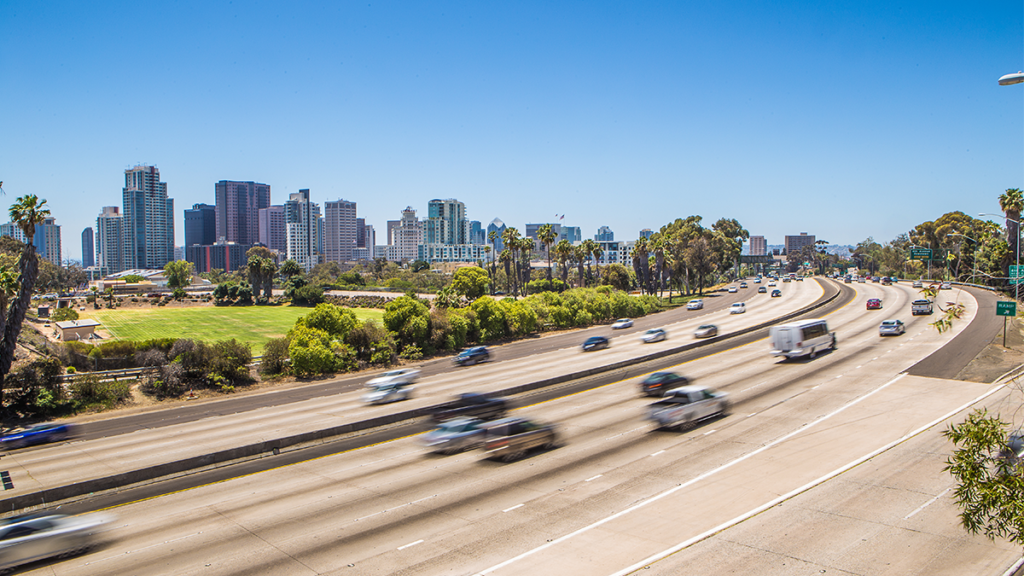
Research by Karen Boyd, Ph.D., Economist @karen_leslie
Transportation is crucial for accessing jobs in San Diego
San Diego County is 4,526 square miles in size. That’s larger than the entire state of Rhode Island and Delaware combined. Because of the considerable milage and layout of the County, only 1% of jobs are accessible within 30 minutes by transit and just 8% are accessible in 60 minutes[1]. That means that the 78% of MTS riders who do not have an available car also do not have access to more than 90% of jobs in San Diego. This divide has created economic inequality for many neighborhoods and hampers the ability for low-income communities to create generational wealth.
Effect on Communities of Color
You may be surprised to find out that what may at first glance appear as happenstance is actually the intentional result of multiple policies and urban elements put in place during the last century that created this inequitable structure, including:
1936: The City of San Diego cooperates with the federal government to draw a “redlining” map, determining which neighborhoods get access to housing loans. The lines intentionally excluded communities of color. The long-term impact of disinvestment can still be seen, for example, in the sudden drop in property values and home ownership rates between Kensington/Talmadge and City Heights.
1950s: Highway 94 is built to separate Southeast San Diego, a Black neighborhood, from surrounding white communities. At this time, police commonly arrest Black San Diegans for loitering when found outside of the Southeast neighborhood. San Diego is “known as a hard town to find a job in” [LG1] [AT2] and sometimes referred to as “Little Georgia” because of widespread racism[2].
1960s: The Chicano community in Logan was divided by the construction of Interstate 5. It split Logan into Barrio Logan and Logan Heights, destroying homes and displacing many residents. Additionally, in 1967 the Coronado Bridge was built on top of Barrio Logan.
Lack of access to jobs and transportation impact everyone, but particularly communities of color.
Effect on San Diegans Living with Disabilities
Another population bearing an outsized burden when it comes to poor public transportation is those who are unable to drive. 5.7% of working adults with disabilities take the bus to work, compared to 2.4% of San Diego workers without disabilities. In other words, a worker with a disability in San Diego is twice as likely to take the bus to work as a non-disabled worker is[3].
MTS offers reduced fares for adults with disabilities and MTS Access provides services comparable to the MTS bus system for people who cannot travel independently, but these passengers still do not have access to the majority of San Diego’s jobs.
Expanding Public Transit is Good for Everyone
More public transit options will not only increase work opportunities, but would also mean San Diegans can access more parks, schools, healthcare providers and childcare options.
If we truly want to create an equitable San Diego, we need to expand our public transit system and ensure it is affordable for everyone. For the neighborhoods that have historically been excluded, for the workers with disabilities, for parents, for students and for anyone who wants to get from one place to another.
What Can We Do Today?
Support legislation and work like Mid-City CAN‘s opportunity youth passes and the Ten Transit Lifelines from the Environmental Health Coalition.
For job seekers looking for assistance, many of the Workforce Partnership’s programs offer supportive services and stipends that can cover gas cards or public transportation funds. You can also connect with a career navigator to see how we can help you get where you need to go.
MTS also offers reduced fares and passes for:
- Senior Citizens (65+)
- Medicare Recipients (not MediCal)
- People with disabilities who qualify under 49 USC 5307(d)(1)(D) and 49 CFR Part 609
- Youth ages 6-18
If you’re an employer, consider offering public transit travel stipends or a shuttle for employees. You can also explore a program that rewards those who carpool to and from work.
[1]- Center for Transportation Studies, Access Across America: Transit 2019, Andrew Owen and Brendan Murphy
[2]- Ford, L and E Griffin. (1979). The Ghettoization of Paradise. Geographical Review 69 (2): 140-158.
[3]- Based on original analysis of 2019 5-year Census ACS data source from IPUMS USA. Sarah Flood, Miriam King, Renae Rodgers, Steven Ruggles and J. Robert Warren. Integrated Public Use Microdata Series, Current Population Survey: Version 7.0 [dataset]. Minneapolis, MN: IPUMS, 2020. https://doi.org/10.18128/D030.V7.0
